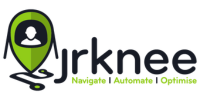Do you ever feel like you’re constantly working but never actually getting anything done? Do you find yourself spending hours on mundane tasks that could easily be automated? As a small business owner, you know that time is your most valuable resource – and yet, you’re wasting at least 20% of it every day on things that could be automated.
You might be thinking, “But I don’t have the budget to hire someone to take care of those tasks.” Fortunately, there is a solution that is not only affordable but also incredibly efficient: customer relationship management (CRM) software. In this blog post, I will explain how CRM can save you time and why it’s worth investing in for your small business.
What is CRM software?
At its core, CRM software is a tool that helps you manage your customer relationships. It allows you to keep track of leads, automate marketing campaigns, analyze customer behavior, and much more. The best part? All of this can be done within a single platform, which eliminates the need for manual data entry and reduces the risk of human error.
Why CRM is worth the investment
The benefits of CRM software go far beyond just saving time. By automating tasks like lead capture and follow-up, you can increase your sales productivity and close deals faster. Additionally, CRM software can help you identify the most profitable customers and tailor your marketing efforts to their specific needs. This not only saves you time but also helps you make more money in the long run.
How to implement CRM in your small business
Implementing CRM software may seem daunting, but it doesn’t have to be. The first step is to identify the areas of your business where automation would be most beneficial. This could include lead capture and follow-up, sales forecasting, customer support, and marketing automation. Once you have a clear understanding of what you want to automate, it’s time to find a CRM solution that meets your needs. Look for a platform that is user-friendly, affordable, and has features that align with your specific business goals.
Best practices for using CRM
To reap the full benefits of CRM software, it’s important to follow best practices when using it. This includes regularly updating customer information, using automation workflows to streamline processes, and analyzing data to identify areas for improvement. Additionally, CRM software should be integrated with other key business tools like your email marketing platform and accounting software. By following these best practices, you can ensure that you’re getting the most out of your CRM investment.
Conclusion:
As a small business owner, time is your most valuable resource. By investing in CRM software, you can save time on mundane tasks, increase your productivity, and improve your bottom line. Remember, if you’re doing something more than three times, it should be automated. So, take a step back and evaluate where you can automate processes to save time and increase efficiency. By implementing CRM software and following best practices, you can take your small business to the next level.
The three takeaways from this blog are:
- CRM software can help you automate tasks and save time.
- Investing in CRM software can increase your productivity and improve your bottom line.
- Following best practices for using CRM software is crucial for getting the most out of your investment.
Are you tired of wasting valuable time on tasks that could be automated? Discover how Customer Relationship Management (CRM) software can revolutionize your small business, saving time and boosting productivity. Dive in now!





